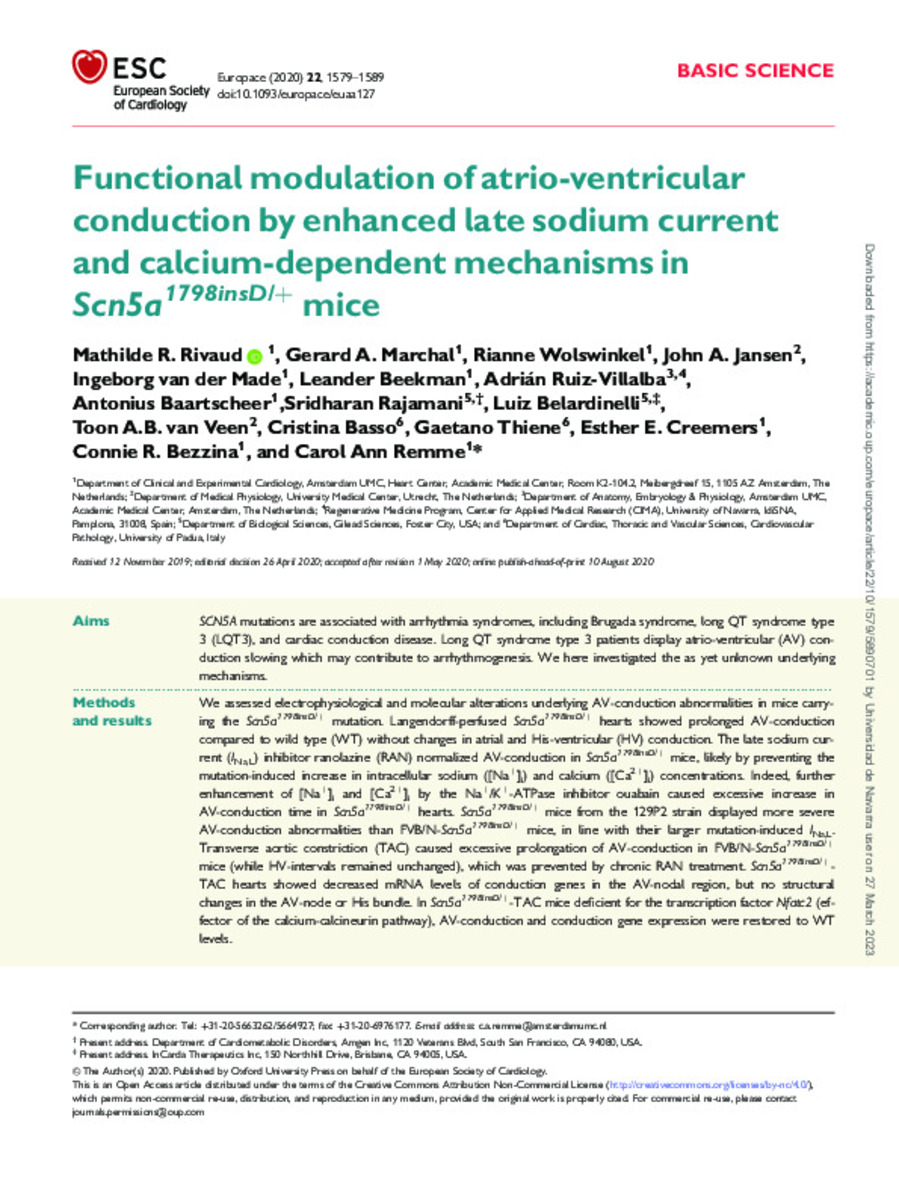Functional modulation of atrio-ventricular conduction by enhanced late sodium current and calcium-dependent mechanisms in Scn5a1798insD/þ mice
Keywords:
Atrio-ventricular block/conductionSCN5A
Mutations
NaV1.5
Late sodium current
Calcium homeostasis
Note:
This is an Open Access article distributed under the terms of the Creative Commons Attribution Non-Commercial License (http://creativecommons.org/licenses/by-nc/4.0/),
which permits non-commercial re-use, distribution, and reproduction in any medium, provided the original work is properly cited. For commercial re-use, please contact
journals.permissions@oup.com
Citation:
Rivaud, M.R. (Mathilde R.); Marchal, G.A. (Gerard A.); Wolswinkel, R. (Rianne); et al. "Functional modulation of atrio-ventricular conduction by enhanced late sodium current and calcium-dependent mechanisms in Scn5a1798insD/þ mice". Europace. 22 (10), 2020, 1579 - 1589
Statistics and impact
0 citas en

0 citas en

Items in Dadun are protected by copyright, with all rights reserved, unless otherwise indicated.







